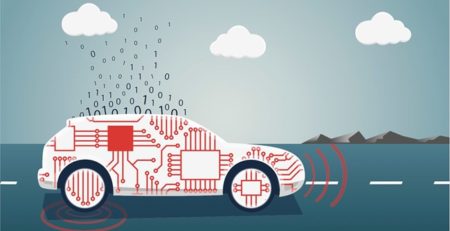Once used exclusively to track the position of vehicles, telematics/GPS technology now allows fleets to monitor vehicle health, driver behavior, and much more along with its traditional role of positioning and routing.
Today’s state-of-the-art telematics technology has evolved into a powerful tool to aid fleet managers in overseeing their fleets and keeping operations running smoothly and safely.
State-of-the-Art Technology
Today’s state-of-the-art technology takes many shapes, but the experts note that “Big Data,” video, the integration of telematics technology into vehicles from the OEMs, and the increasing expansion of safety technology, among others are going to be the most important state-of-the-art features for 2017.
Bernie Kavanagh, senior vice president of Large Fleet for WEX noted that state-of-the-art technology exists in a tension of being simultaneously of its time and a little ahead of it.
“It’s anticipating the needs down the road and developing products and functionality to anticipate and meet those needs now,” he said. “Anybody can look and see what’s happening and try to solve a problem today. But if we can see what has been happening, see what’s happening today, and use the technologies in place to prevent things from happening down the road, I think that’s more state of the art.”
Fundamentally, it’s perhaps not the technology that has become state of the art but how it’s used.
“The — mostly hidden — blackbox, Big Brother approach is dead,” said Torsten Grunzig, director of sales for TomTom Telematics North America. “State-of-the-art telematics technology delivers real-time data and driver support, for instance, providing driver behavior training and traffic avoidance.”
Integrating Data
Grunzig of TomTom sees integration and Big Data as the driving forces in today’s telematics.
“This year will be the year of integration and Big Data usage to improve overall fleet performance,” he predicted. “The time of standalone solutions is gone. Fleet management will serve as a data source not only to help improve driver performance and vehicle utilization, but also to facilitate the delivery of data for insurance savings, ERP, and CRM systems.”
What makes this development particularly important is that the delivery and integration of data can happen automatically, Grunzig added.
This increased level of integration will have a number of practical benefits for fleets.
“One example of this integration is real-time fleet optimization using Big Data and cloud computing to help fleets become more efficient and revenue focused as things change throughout the day,” said Rob Donat, founder and CEO of GPS Insight. “If you have a list of orders and determine that 25% of the remaining work for the day could be reallocated to different drivers based on the number of drivers that have fallen behind and those that are ahead, that will help the business maximize efficiency and therefore profit on a day-to-day basis.”
Pete Allen, executive vice president of sales for MiX Telematics North America, also sees data integration as a key part of today’s state-of-the-art telematics technology.
“From my perspective, the most exciting fleet telematics technology coming down the road is the ability to integrate additional safety technologies with traditional telematics. This would include in-cab video monitoring, collision avoidance, and fatigue detection technologies,” he said. “Integrated in-cab video provides the fleet with a single solution which triggers short video clips based on the same driver behavior alerts from the traditional fleet management telematics solution. Previously, many fleets were purchasing standalone video solutions and installing them next to their fleet management solution requiring them to manage two systems.”
Adding Video
Surprisingly, video may be one of the biggest developments in transforming traditional telematics into its next iteration: video telematics. But simply adding a camera to the mix isn’t creating this new form of telematics cautioned Kara Kerker, executive vice president and chief marketing officer for Lytx.
“Video telematics integrates data from both the telematics sensors and the video, analyzes the integrated data, and delivers effective insights that can be used in coaching drivers. It’s a powerful and precise solution for safety,” she said. “In today’s world, telematics technologies cannot be considered state of the art without video and the integration of the video-related data. It’s simply not possible to optimize your business and measurably lower claims costs with data alone. When you need to know exactly what happened and why, video adds truth and certainty to data. Video telematics is the most valuable way to understand the truth about fleet operations; it provides increased visibility into what’s happening on the road and inside the cab, including further insight into fuel efficiency, fleet tracking, risky driving behaviors, why they’re happening, and more.”
Allen of MiX continued that video is only one part of the transformative changes that are giving birth to the next generation of state-of-the-art telematics technology. Safety technology is also playing its part in the telematics equation.












